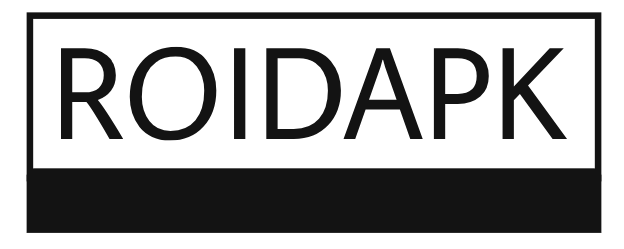
In today’s hyper-connected world, personal branding and communication are no longer optional—they are essential. Whether you’re a professional climbing the corporate ladder, a freelancer carving your niche, or an entrepreneur building your empire, how you present yourself and communicate your message can shape the trajectory of your success.
Personal Branding & Communication go hand in hand. One builds your identity, the other broadcasts it effectively. Let’s explore why they matter, how they’re connected, and how you can master both to elevate your career and personal growth.
What is Personal Branding?
Personal branding is the conscious and intentional effort to influence how the world perceives you. It’s your professional reputation, digital footprint, and unique identity all rolled into one. Think of it as your personal marketing strategy—what makes you you, and why people should remember you.
Key elements of personal branding include:
- Your values
- Your skills and strengths
- Your tone of voice
- Your visual identity (photos, logos, color palettes, etc.)
- Your online presence and offline behavior
A strong personal brand communicates authenticity, builds trust, and positions you as an expert in your domain.
Why Communication is the Backbone of Personal Branding
You can have the best personal brand in the world, but if you can’t communicate it effectively, it remains invisible. This is where communication comes into play.
Communication empowers personal branding by:
- Telling your story with impact
- Articulating your vision, mission, and value proposition
- Connecting emotionally with your audience
- Building lasting relationships across networks
Whether through public speaking, emails, social media, or one-on-one conversations, your ability to convey who you are and what you stand for is what makes your brand memorable.
The Symbiosis: How Personal Branding & Communication Work Together
Let’s look at a few real-world examples:
- LinkedIn thought leaders craft compelling content that reflects their expertise and values. Their personal brand becomes stronger each time they communicate with consistency and clarity.
- Startup founders use storytelling to pitch their ideas to investors and customers. The more authentic and persuasive their communication, the more trust they build.
- Influencers rely heavily on tone, captions, and engagement to define their digital persona. Their personal branding thrives when they communicate with authenticity.
The synergy of personal branding and communication drives visibility, trust, and influence.
Why It Matters More Than Ever
In a world of digital overload and diminishing attention spans, having a recognizable brand and clear message sets you apart.
Here’s why focusing on Personal Branding & Communication is a smart move:
- Builds Trust and Credibility
People trust people—not just companies. A strong personal brand backed by authentic communication can attract clients, employers, collaborators, and media attention. - Opens Career Opportunities
Professionals with a clear brand and excellent communication skills are more likely to be headhunted, promoted, or invited to speak at events. - Supports Thought Leadership
Want to be seen as an industry expert? Share your insights, publish articles, and speak up. Your brand becomes stronger every time you communicate knowledge with clarity. - Grows Your Network
Effective communicators attract meaningful connections. A personal brand that resonates can open doors to mentorship, partnerships, and community.
How to Build Your Personal Brand
You don’t need to be a celebrity or influencer to build a strong brand. Follow these steps:
1. Define Your Purpose and Audience
Why do you do what you do? Who are you trying to reach? Clarity in your “why” and “who” lays the foundation for everything else.
2. Audit Your Current Presence
Google yourself. Review your LinkedIn, Instagram, blog, or website. What message are you sending today? Is it consistent with how you want to be perceived?
3. Create a Personal Brand Statement
In one or two lines, describe your unique value proposition. For example:
“I help small business owners scale sustainably through digital storytelling and automation.”
4. Align Your Visual and Verbal Identity
Use consistent colors, logos, profile pictures, and messaging across platforms. Keep your tone of voice aligned with your personality and values.
5. Be Consistent
Consistency is key—whether it’s weekly blog posts, monthly newsletters, or regular social media updates. Show up, stay visible, and keep adding value.
How to Improve Communication Skills for Personal Branding
1. Master Your Elevator Pitch
Whether at a networking event or on a Zoom call, you should be able to clearly and confidently introduce who you are and what you do in under 30 seconds.
2. Practice Storytelling
People remember stories, not bullet points. Weave your experiences, challenges, and successes into stories that humanize your brand.
3. Improve Your Writing
From LinkedIn posts to emails and blog articles—writing is a powerful tool. Use it to inform, engage, and inspire your audience.
4. Embrace Public Speaking
Whether it’s on camera, at events, or webinars, improve your spoken communication. Join groups like Toastmasters, or start with Instagram Reels to practice.
5. Listen Actively
Communication is a two-way street. Listen with empathy, respond thoughtfully, and be open to feedback. It strengthens your brand’s emotional resonance
Common Mistakes to Avoid
- Trying to please everyone – Your brand should attract the right people, not everyone.
- Being inconsistent – Random content confuses your audience and dilutes your message.
- Overpromising – Authenticity beats hype. Always be real and relatable.
- Neglecting offline communication – Your behavior in real life should match your online persona.
Final Thoughts
Personal Branding & Communication aren’t just buzzwords—they’re the gateway to professional growth, credibility, and influence. When you define who you are, express it clearly, and consistently show up with value, you don’t just build a brand—you build a legacy.
Start small. Be intentional. And remember: the way you communicate is how the world will perceive your brand.

